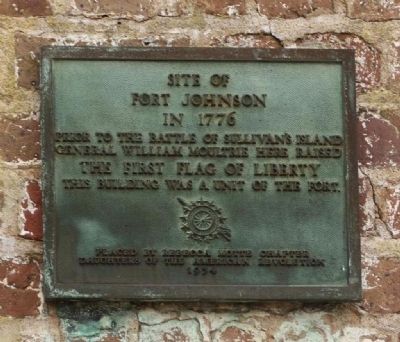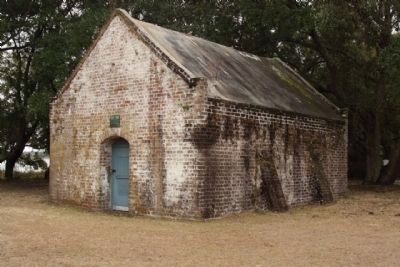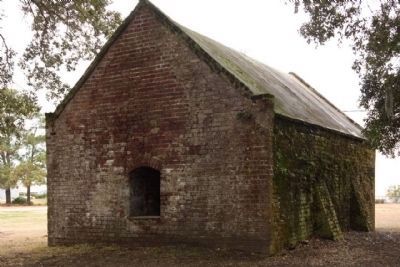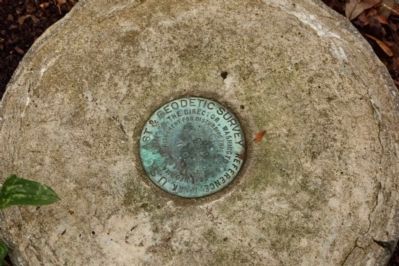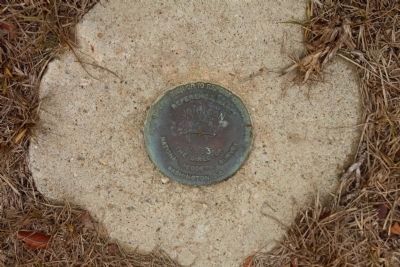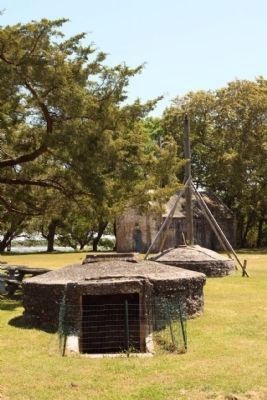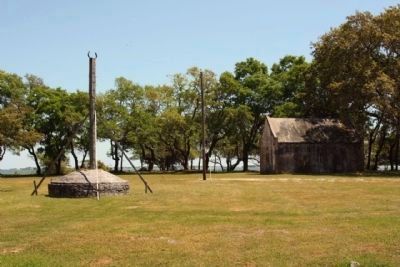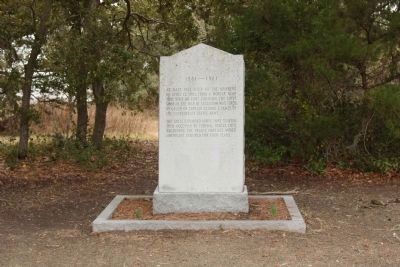James Island in Charleston County, South Carolina — The American South (South Atlantic)
Site of Fort Johnson
Fort Johnson
In 1776
Prior to the battle of Sullivan's Island
General William Moultrie here raised
The First Flag of Liberty
This building was a unit of the fort.
(Emblem: D.A.R.)
Placed by Rebecca Motte Chapter
Daughters of the American Revolution
1934
Erected by Rebecca Motte Chapter, Daughters of the American Revolution (DAR). (Marker Number 1934.)
Topics and series. This historical marker is listed in these topic lists: Forts and Castles • War, US Revolutionary. In addition, it is included in the Daughters of the American Revolution series list. A significant historical year for this entry is 1776.
Location. 32° 45.092′ N, 79° 53.877′ W. Marker is on James Island, South Carolina, in Charleston County. Marker is on Fort Johnson Road, on the right when traveling north. Located near the Northeastern Terminus of Fort Johnson Road. Touch for map. Marker is in this post office area: Charleston SC 29412, United States of America. Touch for directions.
Other nearby markers. At least 8 other markers are within 2 miles of this marker, measured as the crow flies. The First Shot of the War of Secession (a few steps from this marker); Grice Marine Laboratory (within shouting distance of this marker); Marshlands House (approx. 0.2 miles away); Battery Cheves (approx. 1.1 miles away); Sally Port (approx. 1.3 miles away); Powder Magazine (approx. 1.3 miles away); Casemates and Cannon (approx. 1.3 miles away); 42-Pounder, Banded and Rifled (approx. 1.3 miles away). Touch for a list and map of all markers in James Island.
Regarding Site of Fort Johnson. National Register of Historic Places:
Fort Johnson/Powder Magazine *** (added 1972 - Site - #72001197)
About 3 mi. SE of Charleston on James Island, Charleston
♦ Historic Significance: Event, Information Potential
♦ Area of Significance: Historic - Non-Aboriginal, Military, Politics/Government
♦ Cultural Affiliation: English
♦ Period of Significance: 1700-1749, 1750-1799, 1850-1874
♦ Owner: State
♦ Historic Function: Defense
♦ Historic Sub-function: Fortification
Additional commentary.
1.
Fort Johnson is significant both militarily and politically, especially as the site of the first raising of the South Carolina flag in 1775 and as the site of the first shots fired
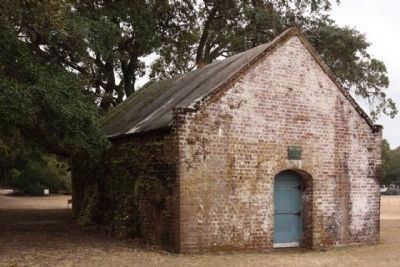
Photographed By Mike Stroud, January 6, 2011
2. Site of Fort Johnson Marker Powder Magazine
This 18th century powder magazine was discovered in the 20th century after spending about 200 years underground. The fort that once stood here covered this magazine with earth to protect it from shelling, and when that got covered up, people forgot about the magazine underneath. It was found during construction and has been preserved.
— Submitted February 4, 2011, by Mike Stroud of Bluffton, South Carolina.
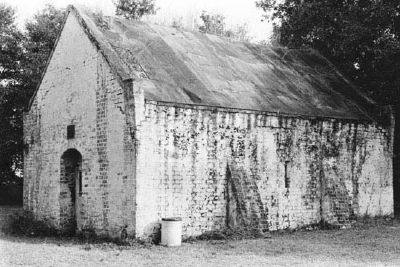
S.C. Dept of Archives and History
7. Powder Magazine
National Register of Historic Places:
Fort Johnson/Powder Magazine *** (added 1972 - Site - #72001197) Fort Johnson is significant both militarily and politically, especially as the site of the first raising of the South Carolina flag in 1775 and as the site of the first shots fired upon Fort Sumter in 1861. Of the fort itself, only considerably eroded
Confederate earthworks remain, although other elements of the fort’s foundations are discernable from ground swells and rubble. Fort Johnson was one of the first defensive works constructed to protect the harbor or Charleston against naval attack. The initial fortification was constructed by the British during the years 1704-08 for defense against the
French fleet during Queen Anne’s War. The fort was named for Sir Nathaniel Johnson, Proprietary Governor of the Carolinas from 1703 to 1709. There was continual reconstruction of the fort from 1704 to 1865, due primarily to damage incurred by storms and to ever-changing military situations. Although the fort itself is in ruins, the powder magazine,
erected in 1765, is intact.
Credits. This page was last revised on February 29, 2024. It was originally submitted on February 4, 2011, by Mike Stroud of Bluffton, South Carolina. This page has been viewed 1,750 times since then and 90 times this year. Last updated on February 26, 2024, by Carolyn Sanders of Plano, Texas. Photos: 1, 2, 3, 4, 5, 6. submitted on February 4, 2011, by Mike Stroud of Bluffton, South Carolina. 7, 8. submitted on April 21, 2010, by Mike Stroud of Bluffton, South Carolina. 9, 10. submitted on February 4, 2011, by Mike Stroud of Bluffton, South Carolina. • Bernard Fisher was the editor who published this page.
